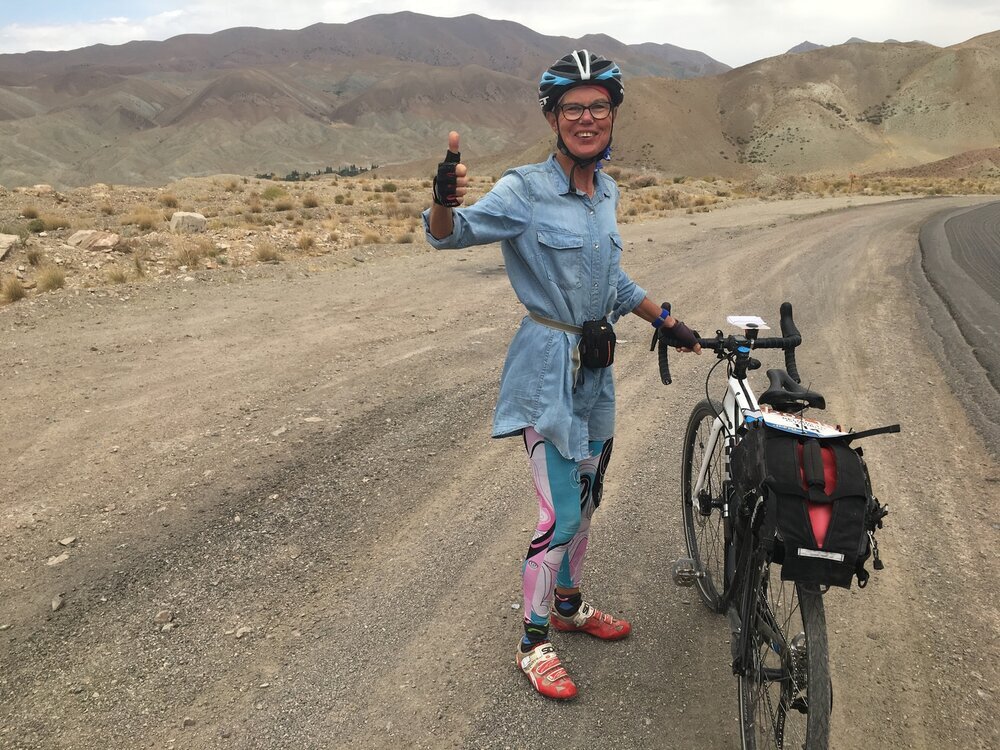How’s Iran adventure on two wheels

TEHRAN - Cycling is a marvelous way to see and experience Iran whether you want to find a leisurely ride with scenic lookouts or challenging routes to test your cardio.
It doesn’t matter if you’re an experienced cyclist or brand new to riding, a biking holiday in the ancient land takes you right into a modern-meets-ancient world to discover amazing ruins, labyrinthine bazaars, deserts, coastlines, and exquisite gardens all on two wheels.
You may also discover wild mountain landscapes, rural villages and stay in local homes and spend time with Iranian families, sharing their homes, their delicious meals, and their stories. Iranians consider travelers to be honored guests and want their guests to feel welcomed, so they shower them with hospitality.

Commonly, Iranians are caring and feel responsible for being by your side. If you ask for directions, they will probably walk you to your destination. Some locals may pull over to offer you food and drinks, invite you to their home to share a meal, and even spend the night. Village dwellers and nomads are fairly welcoming and might farewell you with a pot of their own produced dairy or bread. Even cabbies, shopkeepers, and restaurant owners may refuse payment. Lonely Planet has named Iran the most rewarding destination on Earth because of this generous hospitality.
It is probable to bike Iran in any season, you only need to pick when and which routes to go as it enjoys a varied climate that provides people to sightsee in both high and low seasons. And, that’s due to the vastness of the country which is well extended in both east-west and north-south coordinates. However, there is a significant difference in climate from region to region; central Iran is quite dry and desert-like, the northwest is mountainous, the north is largely covered with thick forests, and the south is somehow semi-arid and tropical.

Thus preferred and safe options are spring and autumn to avoid extremes in temperature. Experts say the best time to cycle in central and southern Iran is from November to April. January and February are appropriate to discover the islands in the Persian Gulf. Besides, the cool mountain regions in the northwest call you for the most pleasant cycling during the summer.
Most cyclists decide to take a route through central Iran from Tehran and head southward to Kashan, Isfahan, Shiraz then loop back to Yazd. Tehran and other metropolises are notorious for their heavy traffic jams and reckless drivers, however, there are many other destinations a little off the beaten track. Outside the big cities, cyclists will mostly have the roads to themselves.

To be honest, Iranian land is mostly mountainous so cyclists should be well prepared to be riding up and down hills most of the time! However, the good news is almost all roads across the country are sealed with asphalt with ridable shoulders on the bigger routes. Moreover, there is a comprehensive network of secondary paved roads that offer you alternatives to the main highways if you wish to escape the traffic and noise.

What to wear on a bike ride in the Islamic Republic? Well, even if the temperatures are soaring, you need to be a lot more covered up than you are used to at home, both to show respect to locals and to ensure that you win respect in return. Women, in particular, should wear comfortable loose-fitting clothing which means a headscarf, ankle-length pants, and a loose shirt to the elbow. Under Islamic rule, all women, foreigners and Iranians alike, are required to wear Islamic hijab in public.

What makes Iran a unique place to go cycling is not the ornate historical monuments, jagged mountains, dense forests, sea coasts, lush plains, or empty deserts. It is a captivating culture and people who you would meet and talk to as you gently pedal through dusty villages and hectic places. The Persian culture of hospitality roots in an old belief that “guest is God’s friend”.
AFM

Leave a Comment